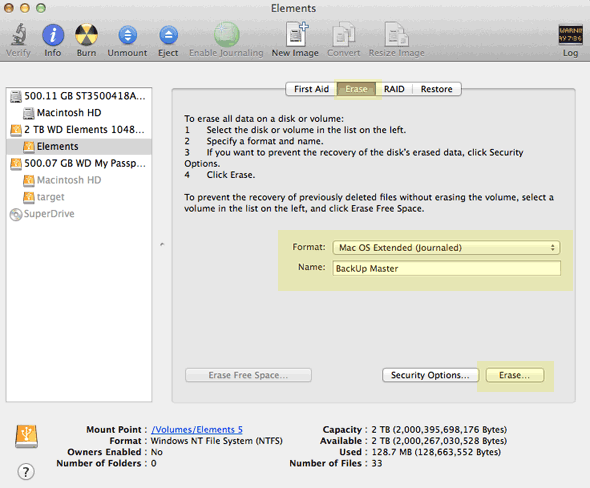

Although most of this information is self-explanatory, ofinterest is the S.M.A.R.T.
/DiskUtility-576d860a3df78cb62c5d6132.jpg)
Each button opensa pane that performs a different function within the application, as you mightguess from their names.Īt the bottom of the Disk Utility window is a display of the details of theselected disk object. When a disk is selected, up to five button bar selections appear in thecontent area: First Aid, Erase, Partition, RAID, and Restore. Grayed outpartitions are system partitions that do not contain files that you can verifyor repair.

To the right of the disk list is the content pane, which displays controlsfor operating on the selected disk item.ĭisks are listed with each of their partitions displayed. Start (or restart) your Macintosh while holding down the C key.Ĭhoose Open Disk Utility from the Installer application menu.Īfter launching Disk Utility, the application opens to display a list of yourdisk resources in a pane on the left side of the window, as shown in Figure3.56.
Mac disk utility waiting for partitions to activate mac os x#
Insert your Mac OS X Install CD into your computer. To use Disk Utility to work on your primary disk,follow these steps: If you only intend to work with a secondary disk or partition, launchDisk Utility from the Finder. Aswith Mac OS 9, you cannot use either of these functions on your startuppartition. Disk Operationsĭisk Utility combines disk repair with disk formatting and partitioning. To discuss Disk Utility, we'll approach it from twosides: the disk imaging aspect and disk repair features. DiskUtility (path: /Applications/Utilities/Disk Utility) can still be usedto create disk images and repair volumes, and has gained a few additionalfeatures as well. In Panther, Apple has combined its two disk-related utilities≽isk Copyand Disk Utilityinto a single application (still named Disk Utility).


 0 kommentar(er)
0 kommentar(er)
